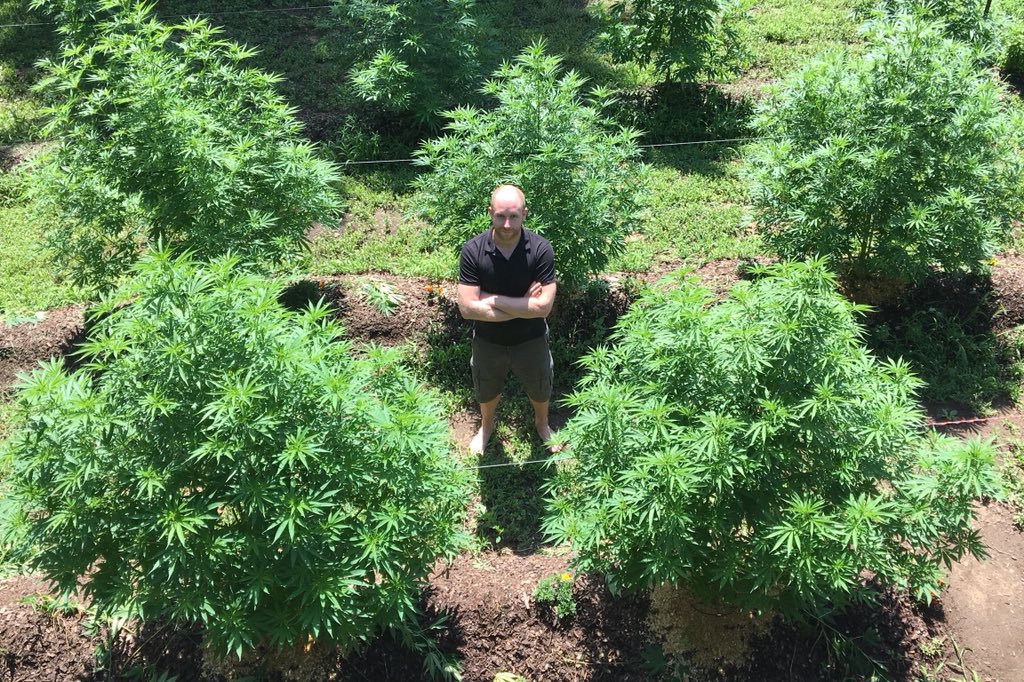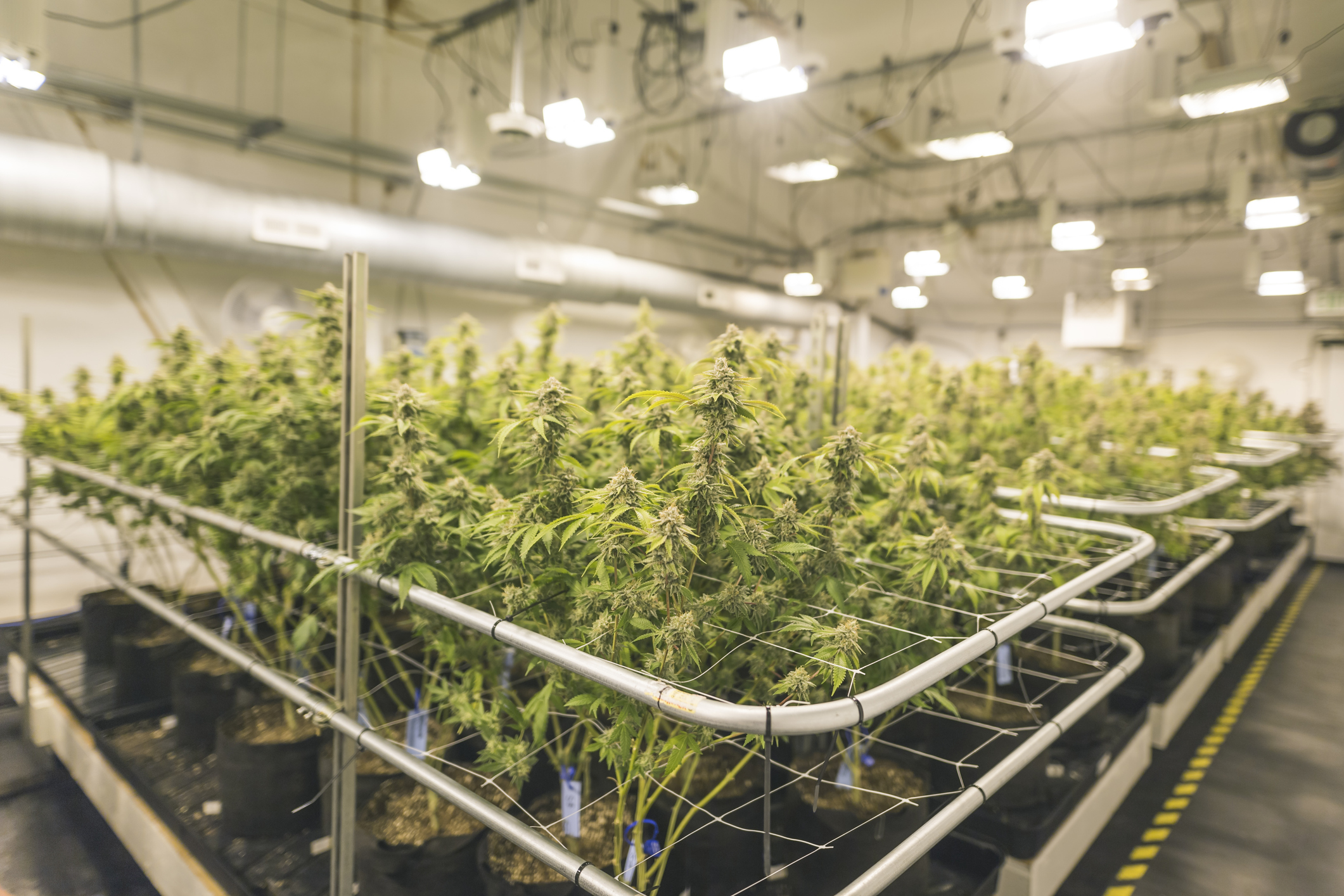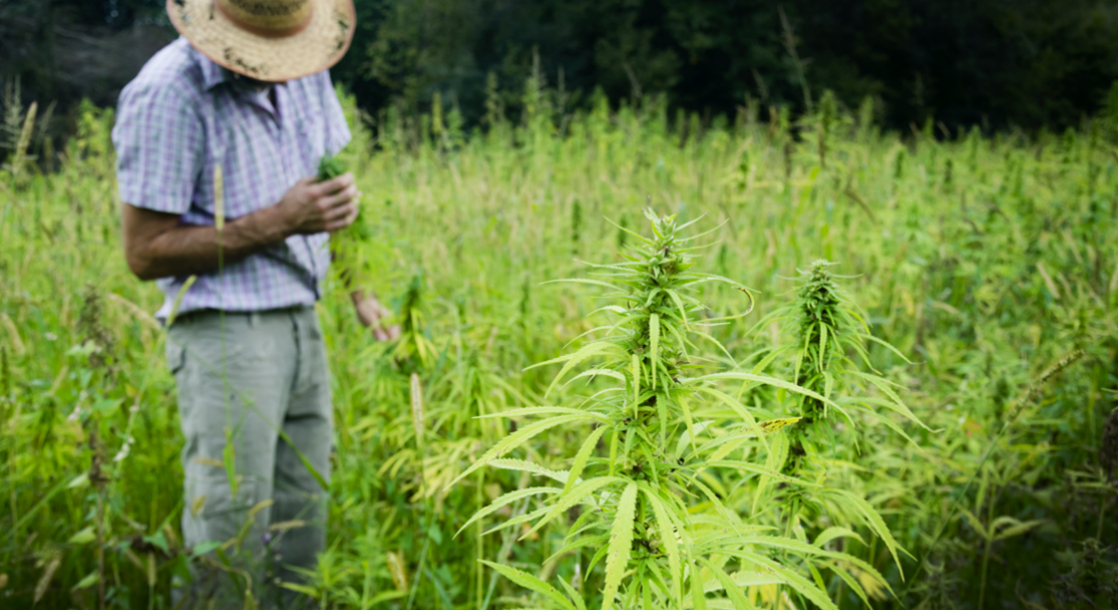Lead photo via iStock
For at least one night in mid-November, the Beckwith Township planning meeting in Ontario seemed like the hottest ticket in town.
About 45 minutes west of Ottawa, the meeting on November 12 was standing room only, with more than a hundred people packing the hall. At the center of the room, dressed in a kind of plaid button-down ubiquitous in rural Ontario and holding a notebook, was Mark Spear. He’s a soft-spoken man who seems to choose his words carefully and deliberately; he seems unlikely, on a personal level, to drum up much controversy, much less one in his own backyard. But it was his company, Burnstown Farms — and their proposal to start growing cannabis outdoors on a 50-acre plot of rural farmland — that had inflamed tensions in the town.
Beckwith Township was witnessing one of the first iterations of municipal planning fights that will likely be repeated across the country in coming years. It revolves around a question that pushes up against the limits of Canadian tolerance of the rapidly expanding cannabis industry, probing just how comfortable communities really are with the plant: whether or not to allow pot producers to grow weed outside on a commercial scale. The option to grow marijuana outdoors commercially is a new one — it was illegal before the Cannabis Act came into force on October 17th — and Burnstown Farms is one of the first companies to seek approval from a municipality for an outdoor production facility.
Even though it is legal under federal law, the packed meeting was evidence that there are still people uncomfortable with the idea of outdoor cannabis farming. Yet its proponents say that it is the future of cannabis growing in Canada, and could become the most common and cost-effective way to meet the country’s growing demand for legal pot.

Mark Spear, founder & CEO of Burnstown Farms; photo via Twitter
**
Until October 17th, all medical cannabis grown legally in Canada had to be cultivated indoors. The reasons for this generally made sense: indoor facilities were considered more secure and safe, and it’s easier to control growing conditions that way. Through indoor cultivation, companies can farm year-round in a country that’s usually colder than many marijuana-growing regions of the world.
Indoor farming has one major drawback, though, which is that it is probably the most expensive way to grow pot. Prospective growers need enough capital to either build a new secure growing facility from the ground up, or to buy and retrofit an existing facility. When you factor in those costs, plus the operating costs of running a large facility and shipping the final product, the price of growing cannabis inside gets quite high: in September 2017, the average cost to grow, harvest, process, and ship a gram of weed for Canopy Growth was $2.73 per gram; in comparison, Aphria was able to get their cost as low as $1.61 per gram.
On top of lower costs, outdoor cannabis is far less impactful on the environment. In 2017, the California Public Utilities Commission cited research indicating that “the energy cost differential between indoor versus greenhouse versus outdoor cultivation to be 78 to 1 to 0.” Outdoor growing eliminates the most hoggish energy needs of a commercial cannabis grow-op: a 2012 study found that 89 per cent of energy use at an indoor grow facility was attributable to lighting, ventilation, or air conditioning.
There was a lot of excitement, then, around the idea of growing cannabis outdoors at a commercial scale when it was first made legal as part of the same regulations that legalized adult-use marijuana. “The significance of this cannot be understated, as there are countless outdoor grow operations (illegal) in Canada that could now apply for a license,” says the regulatory consulting firm Cannabis Compliance Inc., on their website. “Production costs for a very efficient, large-scale indoor operation range from $1/gram to $3/gram, whereas outdoor farming in theory could bring commercial production costs below twenty cents per gram, based on our modelling.”
That difference in price is what makes growing cannabis outdoors so attractive to Spear, at least in financial terms. Growing outside has “drastically less capital expense to get up and running, as well as operating expenses,” he tells MERRY JANE. He points out that the current system of all-indoor growing is “hugely expensive, and why? Why is it grown inside? There’s no good reason, other than to evade detection.”

Growing indoors is a far more expensive way to produce pot; photo via iStock
So far, Canada’s pot industry has been lukewarm to the idea of outdoor growing, though. The Cannabis Council of Canada (CCC), a coalition of major licensed producers, officially opposed the idea of legalizing outdoor production, at least right away. “A little bit more time, we felt, would have been wiser,” says Allan Rewak, executive director of the CCC, in an interview with MERRY JANE. “We wanted to see outdoor [cultivation] included, we just didn’t want it included in the first tranche [of regulations].”
Bruce Linton, the head of Canopy Growth Corp., lobbied the government earlier this year to exclude outdoor growing for the time being. Appearing in front of a Senate committee in May, Linton testified that outdoor growing “may have a future sometime, but I don’t think it’s today,” and said that it would “sidestep all the benefits” of the current supply chain. Earlier this year, Linton invited several senators out to the company’s production facility in Smiths Falls, Ontario, and allegedly floated the idea that drones could steal outdoor crops. (The suggestion was met with mockery; verp.ca, a cannabis satire site a lá The Onion, ran a report with an editor’s note stating that “unlike most stories on this site, this is actually true and really happened.”)
Spear understands this hesitance on the part of the country’s established production companies, many of whom have invested heavily in indoor facilities. “It was interesting that they didn’t come out and say that cannabis grown outdoors should never be legal. They said, ‘Not yet, give [them] some time to work through it and prepare themselves so they can capitalize on it,” he says. “If outdoor is successful, and it is that much cheaper, their business model is in trouble.”
**
To some extent, the debate over whether Canada should be allowing outdoor cannabis cultivation, and where, is irrelevant — if Canada wants to be able to comfortably supply the market for cannabis, particularly when concentrates and edibles (which require more raw material) are made legal next year, it’s arguable that there’s no choice but to throw the doors open on outdoor growing.
All of the cannabis that Burnstown Farms plans to grow will be sold wholesale (at least at first) to processors, who will then turn it into concentrates and oils. Rewak and the CCC admit, despite their opposition to outdoor growing, that it will eventually be necessary. He says that outdoor cannabis, which is cheaper to grow, will “become a feedstock for oil production, not just for the medical market but for the adult consumer-use market as well, as edibles and concentrates come on stream next year.”
In an August 2017 brief to the House of Commons, cannabis industry players David Marcus, Jonathan Page, David Hyde, A.R. McElroy, and Matt Maurer wrote that “there is a real and recognized risk that the industry as it is currently defined won’t be able to expand quickly enough. […] It typically takes anywhere from six months to three years to build a growing facility and bring it up to full production. Outdoor production, by comparison, requiring far less in the way of infrastructure, offers a rapid, decentralized means of ramping up production quickly and safely.” Plus, they wrote, cannabis “grows well outdoors in Canada, as has been demonstrated by the success of hemp farming nationally.”
To anyone who believes you can’t grow phenomenal cannabis outdoors in the Ottawa Valley: Watch me. #fieldgrown #organic #ACMPR pic.twitter.com/NvZeBm5noP
— Mark Spear 🇨🇦 (@spearster55) July 28, 2018
With this in mind, Spear expects outdoor growing to become the most common way of producing pot in the next decade. “I think indoor [grows] are going to become dinosaurs in the next five to ten years,” he says. “There’s going to be a handful of them that produce exceptionally high-quality flower — top shelf — and people will pay for it. That might be ten percent of the market. The rest will be greenhouse or outdoor.”
**
There are two sides to every coin, though, and just because it’s legal and necessary doesn’t mean it’s universally popular.
To some people, erudite debates about business models and production workflows are akin to ‘inside baseball’ within the cannabis industry; they seem to brush past the core idea of growing weed out in the open, the appropriateness of which is not a safe assumption for some people — like certain residents of Beckwith, for whom the idea of growing marijuana outside strikes a little too close to home.
Spear says that they became aware that they were going to run into opposition “relatively early on.”
“There’s a couple of residents in particular who are dead set against it, and they took it upon themselves to distribute our site plan,” he says. Many of the people at the November planning committee meeting, he notes, were people “who were confused and curious […] they weren’t necessarily for or against it, they just wanted the facts.”
Two of those residents who have taken it upon themselves to lead opposition to Burnstown Farms are Robin and Timon Garreau, who live with their family across the street from the proposed site and have been quoted in several news sources decrying the plan. Robin Garreau told the CBC that "It's essentially opening up a facility with no rules in terms of odor mitigation,” while her husband Timon told the Ottawa Citizen that he was worried that the cannabis farm could reduce the value of his house by $100,000.
(MERRY JANE reached out to the Garreaus, who did not return our request for an interview.)
Maybe unsurprisingly, Spear objects to these concerns on factual grounds. Of the concern about odors, he says, “even if they could [smell it], it’s not an offensive scent like liquid manure or a hog fam, or all of these other agricultural operations that people are used to putting up with in rural areas”; of the objections raised by some residents that it would contaminate the soil, he counters that cannabis plants have the ability to pull heavy metals out of the soil; of the concern that it will lower property values, he says, “there will be less impact than a traditional agricultural operation.” (Though there are no statistics on property values near cannabis grow-ops in Canada, jurors in a recent court case in Colorado found that there was no evidence living near a pot farm negatively affected the property values of neighboring properties.)
#Falliscoming which means #harvest time. I can’t wait to try this years crop. #GrowYourOwn #ACMPR pic.twitter.com/jT0HieEE8t
— Mark Spear 🇨🇦 (@spearster55) August 30, 2018
Spear understands the broad gist of the opposition. “It’s more the mental associations of something that [used to be] illegal,” he says. “I’ve seen all these objections before. The majority of them have been debunked by someone else at some other point in time, but it’s hard to have a conversation when people don’t want the facts.”
But whatever you make of residents’ concerns, be they rooted in evidence or not, they are easy to understand as a generalized resistance to change. Beckwith Township voted early on to ban any retail dispensaries from opening there; several other small rural Ontario towns in the Ottawa Valley did the same. It’s a reminder that, depending on where you are in Canada, cannabis legalization is not seen in the same light. There are still pockets of the country that quite simply want nothing to do with it one way or the other.
As prospective cannabis growers look for suitable plots of land on which to grow their crops, this pattern — in which a company proposes an outdoor pot farm, and is met with resistance from the locals — is likely enough to repeat itself. While the precise dimensions of their opposition may change from town to town, the core of their argument (that cannabis may be legal, but that doesn’t make it a nice thing to live beside) will remain pretty much intact.
It’s also not a fight opponents are likely to win. Since cannabis is now a legal crop, and Spear is proposing that they grow it on land that’s zoned for farming, there’s not a great deal that residents can do to stop it. If the town were to refuse the application, Spear could appeal the ruling to the Local Planning Appeal Tribunal, a body which adjudicates disputes between municipalities and prospective developers.
**
Burnstown Farms isn’t ready to plant their product just yet, but Spear says that he hopes to be able to start in 2019. “We hope to. I don’t know if I expect to,” he says. “There’s no reason from our point of view that we won’t be ready, it’ll just be a matter of Health Canada and the federal license.”
But with shortages of cannabis expected for at least the next year, Spear is hoping to be one of the first to leverage the kind of low-cost production capacity that outdoor growing offers. “There’s certainly a demand for product,” he says. “There’s a huge shortage, and there’s going to be a massive demand for wholesale oil as the regulations change late next year. I think Health Canada is probably cognizant of this.”
The town, he hopes, will come around to the farm and see that it is not the danger that some thought it would be. Spear is a local to the area, and wants to see the economic benefit felt in his community, rather than another.
“We wanted to see our own community do well,” he said. “But it’s really interesting, since this started, neighbouring municipalities have got in touch and said, ‘If you’re having a hard time there, come here; we’ll do whatever it takes. We understand the benefit.’”











